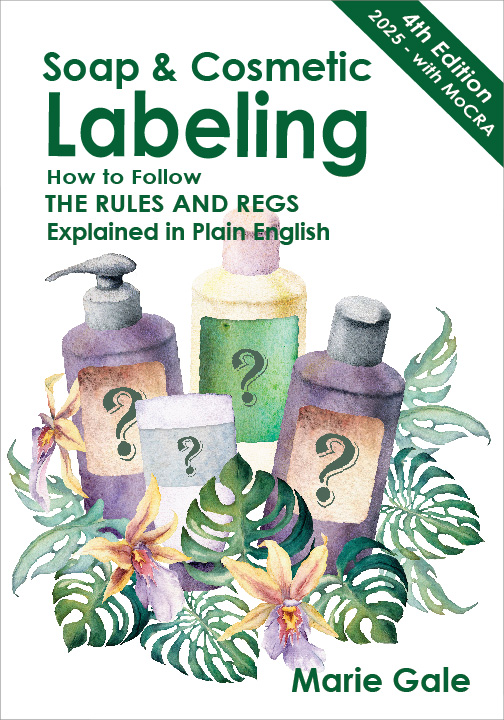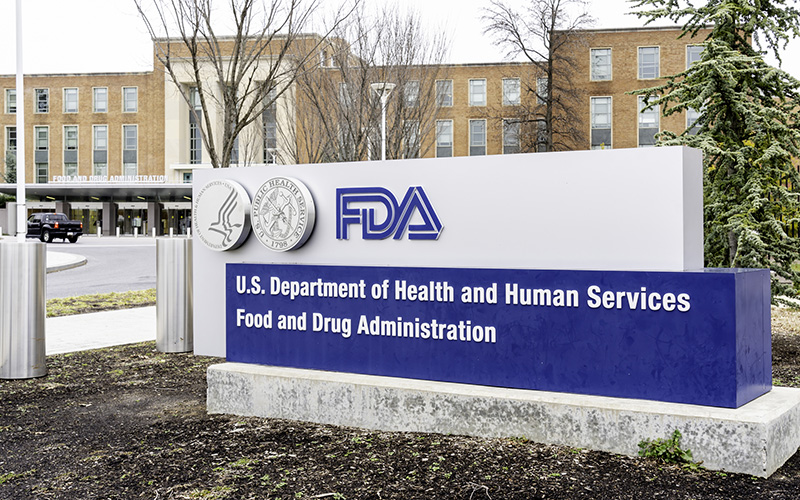Based on the warning letters the FDA sent to manufacturers of cosmetics in the last year (especially the last 4 months of 2013), the FDA is starting to crack down on some of the claims being made for cosmetics. I looked through all of the warnings for cosmetics and some of the warnings for food supplements, and made some surprising discoveries.
All of the 2012 warning letters for cosmetics were issued because the products were being promoted for uses that caused the products to be drugs (except one which was for product contamination). In other words, the claims made for the product indicated that they were “intended to affect the structure or any function of the human body,” making them drugs in the eyes of the FDA.
I have to admit, most of the claims were, in fact, claims that the product could change the body function and structure. What was a little surprising was what the FDA referenced as sources of claims.
Source of information
At the beginning of each letter, the FDA states what material(s) they reviewed. Most of them cited “a review of your website at ___,” or the product labeling, (or both) which is to be expected.
What I didn’t expect to see were reviews of invoices sent with products, brochures sent with products, “your amazon.com store,” Facebook posts about the product, and even metatags used in the website. It is apparent that the FDA is digging a little deeper into how and where claims are being made. “Labeling” is not just what you say on the product label itself; it’s everything you’ve said about the product.
Testimonials
In a number of the warning letters, the FDA cited customer testimonials on the site as making drug claims for the product. Some of the examples were:
- “[M]y grandmother had a horrible case of shingles. Nothing the doctor gave her worked even after months of treatment. I brought down some [product] for her to use and 7 to 10 days later it was completely healed.”
- “The scars in my upper arms… are getting lighter.”
- “I started to get severe acne on my face and neck… I feel like I have found a miracle cure.”
- “[H]ad a patch of psoriasis on the side of one eye for years. Dermatologists gave me medicines for years without success. Four nights of the [product] cleared the psoriasis.”
The moral? Don’t use customer testimonials that state that the product treated, cured, or mitigated any disease” or that it affected the “function or structure of the body.” Even if it’s true!
Citing Research and Articles
One product cited has a page on the website that cited news articles and studies about an ingredient in the product, including studies published in recognized research journals and even the US National Institute of Health. The FDA had this to say:
When scientific publications are used commercially by the seller of a product to promote the product to consumers, such publications may become evidence of the product’s intended use. For example, under 21 CFR 101.93(g)(2)(iv)(C), a citation of a publication or reference in the labeling of a product is considered a claim about disease treatment or prevention if the citation refers to a disease use, and if, in the context of the labeling as a whole, the citation implies treatment or prevention of a disease.
So, even if there are accepted studies that conclusively show that an ingredient has “drug” properties and has been proven to cure, mitigate, or treat a disease or to change the function or structure of the body, those studies cannot be cited as part of the materials on or accompanying the product. It’s completely unfair, but that’s what the regulations are.

Claims for Ingredients in the Product
Some of the content cited as making drug claims was in the form of statements made about a particular ingredient in the product, not the product itself. This was particularly true for claims made about essential oils. Some of the claims cited were:
- “[L]icorice extract is anti-inflammatory, anti-irritant, anti-microbial… & has a sebum regulation activity.”
- “Organic Cedarwood… helps to strengthen hair growth… and combat… hair loss.”
- “Eucalyptus also offers antibacterial, anti-inflammatory benefits and can help to stimulate blood circulation on the scalp, encouraging hair growth….”
- “Organic Petigraine… antiseptic properties help to clear… blemishes…”
- “Organic Thyme[,] a potent antimicrobial, antibacterial, and antifungal… recommended for many types of skin disorders.”
- “Organic Palmarosa… anti-infectious botanical, as well as an antifungal… also helps in treating a range of skin infections while offering antiseptic… benefits.…”
- “Organic Patchouli… known as… [an] antimicrobial ingredient.…”
- “Chamomile… celebrated for its… anti-inflammatory properties.…”
- “Natural B vitamins in the soy and safflower oils help in cell formation and build skin immune functions.”
Of course, anyone who has experience with essential oils or has studied the materials about the various properties of essential oils, knows that many of them DO have “drug-like” properties. Many of these essential oils and the plants from which they are extracted have been used for centuries to treat and cure. However, claiming that in product materials or on the label is a big no-no.
Review Your Product Labels
In light of this information, it might be a good idea to review your product labels and the materials that accompany your products, including your website, Facebook pages, promotional materials, and even your invoices.
Keep in mind that cosmetic products are “products intended to be applied to the human body for cleansing, beautifying, promoting attractiveness, or altering the appearance.” Drugs are “products intended for use in the cure, mitigation, treatment or prevention of disease and articles intended to affect the structure or any function of the body.”
The key word here is “intended.” As in, what does the consumer intend to do with your product, based on what you’ve stated the product can do? If the consumer, based on what you’ve told him or her, buys your product because he or she intends to treat or cure something, then you have made drug claims somewhere and should revise your wording to conform with cosmetic regulations.

Shameless plug!
To really be able to create your own labels that comply with the regulations, get my book from Amazon and use it.
4th Edition – Released March 5, 2025!!!
Or order directly from me (and get a signed copy)!


Leave a Reply